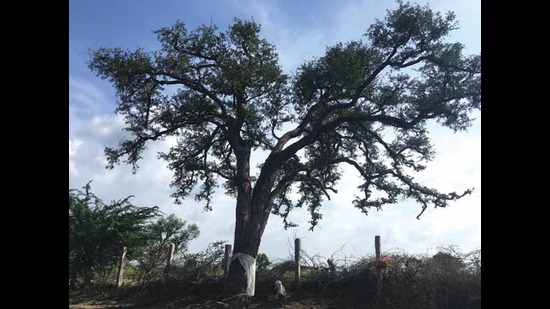Trees of South India: Read an excerpt about reviving an ancient native forest
The following excerpt is from the introduction to the tree identification book produced by the Auroville Botanical Gardens.
I had been drawn to Auroville by the stories of regenerating a wasteland, a tale that had begun twenty years previously as people from all over the world had come to start an experiment in Human Unity.

When I arrived, I was amazed by the dedication and commitment of the foresters within the community. Many of them had been around since the early years and had devoted the best parts of their lives to planting trees and protecting them. Amongst this group, there was a small number of individuals who were starting to systematically research the native forests of the area. It was the perfect opportunity for me, and I happily joined them on their journey. We began to explore the forest remnants and put the parts of the puzzle together.
Of course, learning the names of the trees and shrubs was a fundamental first step. We were lucky as there was an amazing botanist by the name of Father Mathews based in Trichy who was just completing a decade-long project to publish a flora of the Tamil Nadu Carnatic. Geographically, Auroville lies a little to the north of this region; however, the majority of our species were covered by his work. Over time, we were able to develop a personal relationship with him and he joined us a few times on our explorations.

However, it was a challenge. His book was a traditional flora with binomial keys, focusing on flowers as the primary means of identification and filled with botanical jargon to describe the plants. I am sure alone I would have lacked the patience to work systematically, but fortunately, we were a group, each with our own skills. Together, over a number of years, we managed to wade through the technical terms, learning as we went, and come up with the names of the plants we held in our hands.
At the same time as familiarizing ourselves with the plants, we were also collecting the seeds, learning how to propagate them and grow them in our nurseries, with the aim of planting the native species as an understorey to the Auroville forests, and it was at this point that we began on the journey which has led to the creation of this book. As we approached the different land stewards of the forest areas, encouraging them to plant these new trees and shrubs, we had to pass on our hard-won knowledge and teach them the names, so that they in turn would be able to understand the different ecological information associated with individual species and plant them within the right niches in the forests. For within the group of trees and shrubs we had discovered, there were some better adapted to the shade, others more suited to poor soils, and others that were able to withstand partial waterlogging as they were naturally found alongside rivers and waterbodies.
Our first attempt was a book we called the Tree Planters Guide to the TDEF. We borrowed, with permission, illustrations from Father Mathew’s Flora and created a spiral bound volume that held information on around 120 species of trees we were by then growing in our nurseries. As the years went by, we became more tech-savvy, and created websites that disseminated the information and held digital photos of the plants, such as http://auroville-tdef.info/ and later on https://www.plantekey.com/ and https://aurovilleherbarium.org/.
However, although we can be dazzled and impressed by the way information is instantly accessible via the internet, a book still has extraordinary value. It is something that has the power to inspire and encourage people to educate themselves, either through an intensive period of serious study or by occasionally picking it up and leafing through the pages. Over the past few years, a number of amazing books have been published, that have satisfied a yearning amongst people to learn more about the trees around them, and this drew us towards the idea of publishing a field guide for the trees and shrubs that are by now so familiar to us.
Excerpted from Trees of South India: Native Trees and Shrubs of the South Indian Plains and Hillocks, by Auroville Botanical Gardens, published in 2024 by HarperCollins.
All Access.
One Subscription.
Get 360° coverage—from daily headlines
to 100 year archives.



HT App & Website







